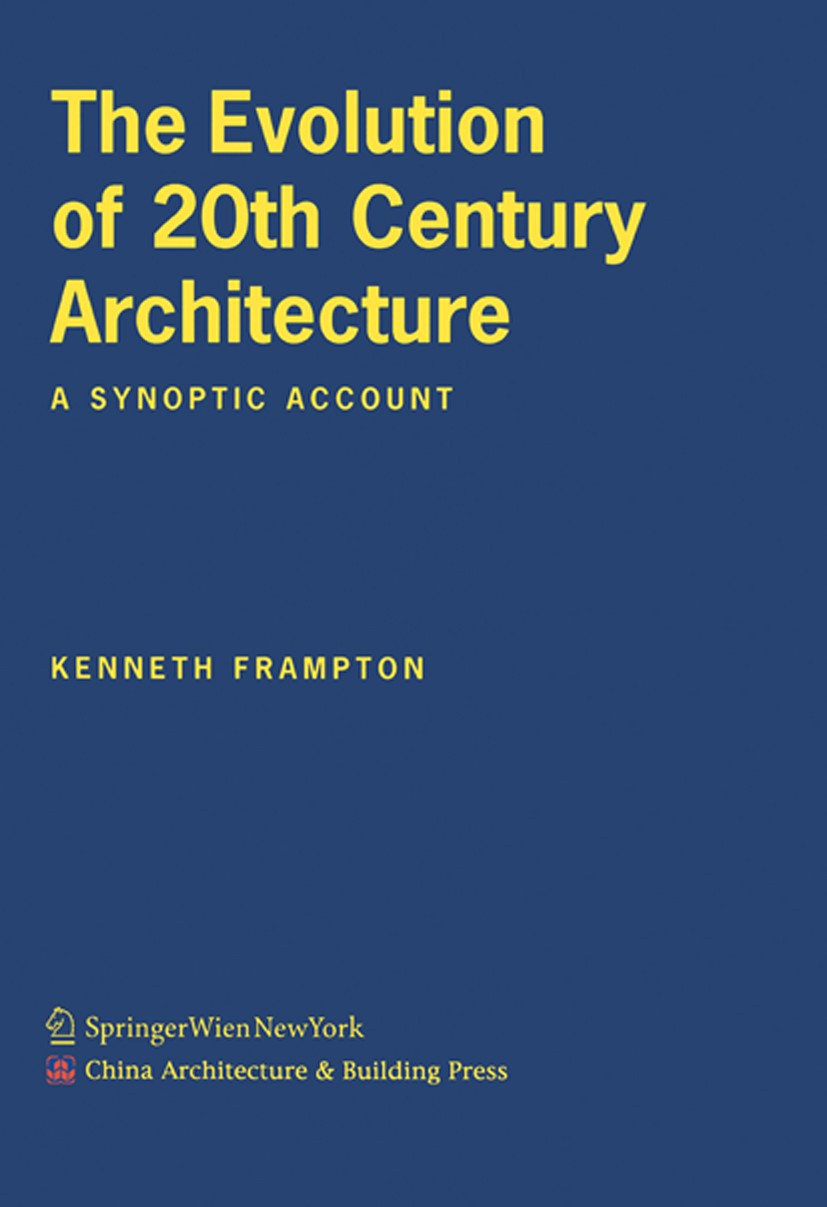| 书目名称 | The Evolution of 20th Century Architecture: A Synoptic Account |
| 编辑 | Kenneth Frampton |
| 视频video | http://file.papertrans.cn/910/909289/909289.mp4 |
| 概述 | New approach to the history of architecture by Kenneth Frampton.Architects, styles and theories in a uniquely compact overview.Easily understandable explanations, richly illustrated |
| 图书封面 |  |
| 描述 | Part 1: Avant-Garde and Continuity 1887-1986 . . . . . . . . . . . . . . . . . . . . . . . . . . . . . . . . . . . . . 9 Part 2: The Vicissitudes of the Organic 1910-1998 . . . . . . . . . . . . . . . . . . . . . . . . . . . . 49 Part 3" Universal Civilization and National Cultures 1935-1998 . . . . . . . . . 85 Part 4: Production, Place and Reality 1927-1990 . . . . . . . . . . . . . . . . . . . . . . . . . . . . . 123 Bibliography . . . . . . . . . . . . . . . . . . . . . . . . . . . . . . . . . . . . . . . . . . . . . . . . . . . . . . . . . . . . . . . . . . . . . . . . . . . . . . . . . . . . . 147 Acknowledgement . . . . . . . . . . . . . . . . . . . . . . . . . . . . . . . . . . . . . . . . . . . . . . . . . . . . . . . . . . . . . . . . . . . . . . . . . . 149 Index . . . . . . . . . . . . . . . . . . . . . . . . . . . . . . . . . . . . . . . . . . . . . . . . . . . . . . . . . . . . . . . . . . . . . . . . . . . . . . . . . . . . . . . . . . . . . . . . . . . 150 ontents Introduction the limited space that l have at my disposal, it obviously impossible to give a truly global history of the evolution of twentieth century architecture. Instead I have attempted to trace diff- |
| 出版日期 | Book 2007Latest edition |
| 关键词 | Architecture; Avant-Garde; History; National Style; Organic-Architecture; Regionalism; The Modern; architec |
| 版次 | 1 |
| doi | https://doi.org/10.1007/978-3-211-69475-6 |
| copyright | Springer-Verlag Vienna 2007 |
 |Archiver|手机版|小黑屋|
派博传思国际
( 京公网安备110108008328)
GMT+8, 2025-11-17 05:08
|Archiver|手机版|小黑屋|
派博传思国际
( 京公网安备110108008328)
GMT+8, 2025-11-17 05:08


